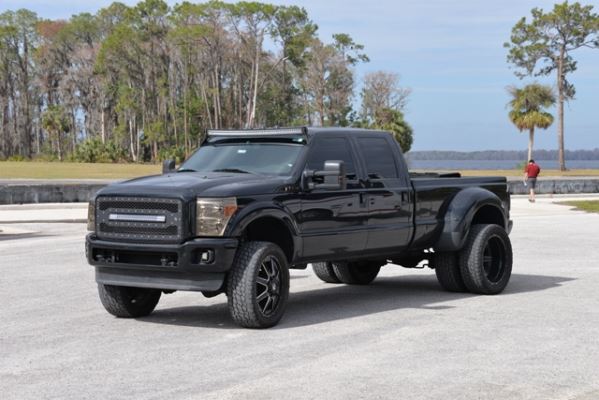
This article originally appeared in the April 2020 issue.
Since it’s getting warmer outside now and the weather is more appropriate for getting outside to put mods on your truck as well as taking your rig to a show, I’ll bring up another upgrade topic: tint. To be brutally honest, window tint is a great thing to have on a truck if you want to make it look stylish. It adds a character of toughness, especially when done with a handful of other mods. Some of us also like to tint for privacy reasons. The best benefit of all, though, has to do with comfort as well as your health and well-being. Tint provides extra protection inside your cab from the hot sun and the harmful UV-A and UV-B rays that come along with it. Those rays have been shown to cause certain types of skin cancer. We all know how oppressive that greenhouse effect can get during the summer. Depending on where you live, it can sometimes be bad year-round. If all you’re worried about is heat buildup, of course, you could simply crack your window open, but the tint does have a much stronger effect in suppressing that unbearable, hard-to-breathe heat.
Tint Laws
Of course, there are legal limits on which windows you can tint and how much tint you can use. As always with mods, some states and provinces are stricter on tint than others. I know we may be talking a lot about having a vehicle that’s street-legal, but the law is the law and we don’t want to get fined, or more importantly, get into a wreck. If your windshield and/or front windows are heavily tinted, others may struggle to read your body language, including hand signals. We can have fun with our trucks all we want as long as we use common sense and stay safe with our equipment.
The good news is that most states in the U.S. are quite tint-friendly and have relatively low minimum visible light transmittance (VLT) percentage requirements (within around the 30-40 percent range). However, you then have mid-level enforcement states, such as Pennsylvania and New York, which require more than 70 percent VLT for both the windshield and front windows. Getting even stricter, California doesn’t allow tinting on the windshield at all (except for the top 4 inches) and requires more than 70 percent VLT on the front windows. Among the strictest states are New Jersey and Vermont, which don’t allow any tinting at all on the windshield nor front windows.
License Plate Covers
There’s another kind of tinting I’d like to address, and that’s license plate covers. While it does add a cool look, this is the kind of tinting that oftentimes is flat-out illegal, simply because it can make your license plate(s) very difficult to read. Some may like to cover their plate because they want privacy from automated license plate readers (ALPRs). Some may choose to do it for less ethical reasons, such as to hide their identity for prior wrongdoings. However, here’s some common sense: drawing the attention of the law is never a good idea. If you’re going to tint something, just tint your windows and nothing else if you want to make things as easy on yourself as possible.
Double Check
While much of this is just my humble opinion, I did mention state laws, and I hope you can ponder this area a little further. Before you get anything tinted, check your local and state laws and call your DMV to ensure you’ll meet the requirements. While you can get your windows tinted as long as you meet the requirements with the law well spelled-out, you’re definitely taking a risk by tinting your license plate as those laws are more ill-defined.